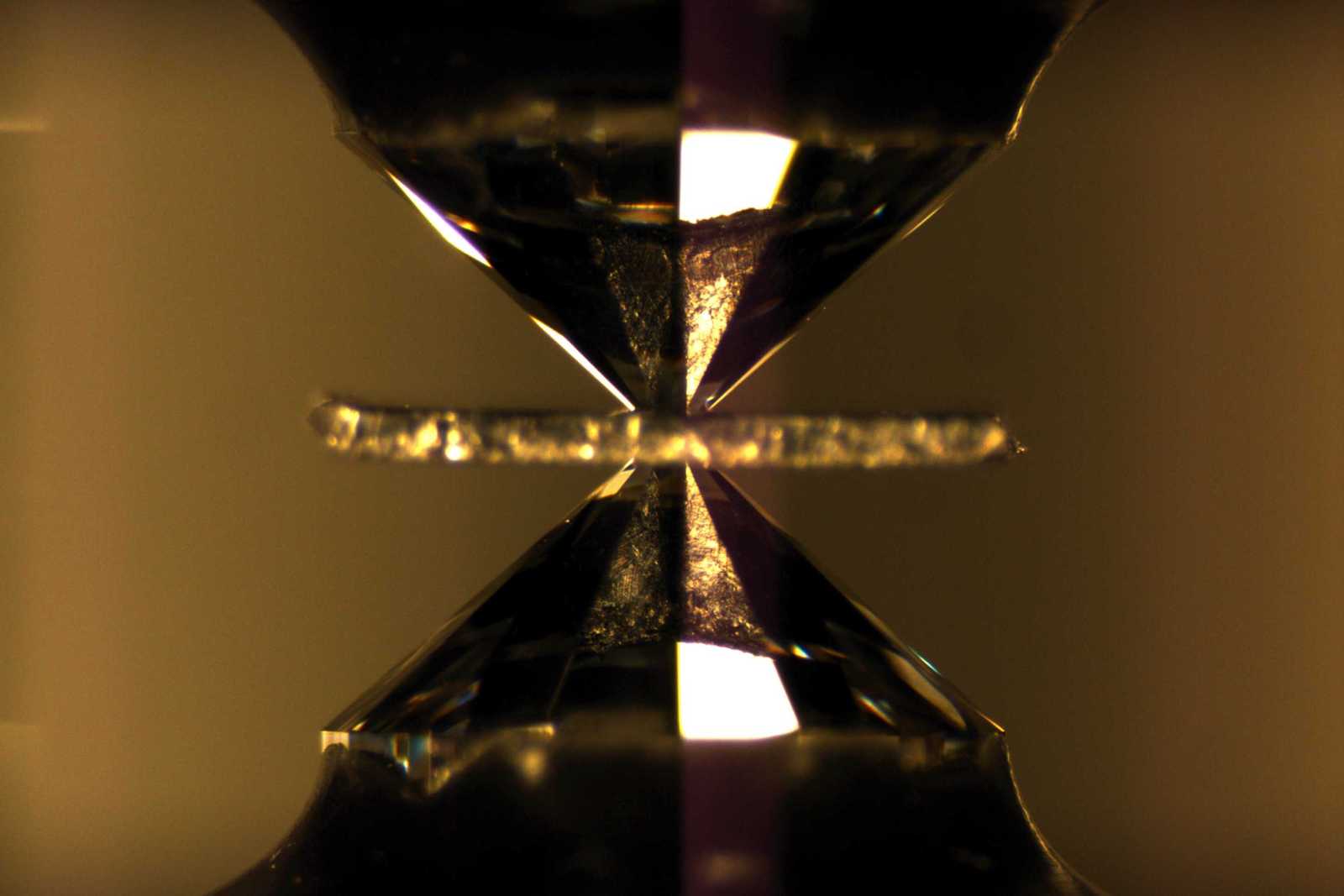
Metallic hydrogen will change the face of technology - until it evaporates
In the forges of the XNUMXth century, neither steel nor even titanium or alloys of rare earth elements are forged. In today's diamond anvils with a metallic luster shone what we still know as the most elusive of gases ...
Hydrogen in the periodic table is at the top of the first group, which includes only alkali metals, that is, lithium, sodium, potassium, rubidium, cesium and francium. Not surprisingly, scientists have long wondered if it, too, has its metallic form. In 1935, Eugene Wigner and Hillard Bell Huntington were the first to propose conditions under which hydrogen can become metallic. In 1996, American physicists William Nellis, Arthur Mitchell, and Samuel Weir at Lawrence Livermore National Laboratory reported that hydrogen had been accidentally produced in the metallic state using a gas gun. In October 2016, Ranga Diaz and Isaac Silvera announced that they had succeeded in obtaining metallic hydrogen at a pressure of 495 GPa (approximately 5 × 106 atm) and at a temperature of 5,5 K in a diamond chamber. However, the experiment was not repeated by the authors and was not independently confirmed. as a result, part of the scientific community questions the formulated conclusions.
There are suggestions that metallic hydrogen may be in liquid form under high gravitational pressure. inside giant gas planetslike Jupiter and Saturn.
At the end of January of this year, a group of prof. Isaac Silveri of Harvard University reported that metallic hydrogen had been produced in the lab. They subjected the sample to a pressure of 495 GPa in diamond "anvils", the molecules of which form the gas H2 disintegrated, and a metal structure formed from hydrogen atoms. According to the authors of the experiment, the resulting structure metastablewhich means it remains metallic even after the extreme pressure has ceased.
In addition, according to scientists, metallic hydrogen would be high temperature superconductor. In 1968, Neil Ashcroft, a physicist at Cornell University, predicted that the metallic phase of hydrogen could be superconductive, that is, conduct electricity without any heat loss and at temperatures well above 0°C. This alone would save a third of the electricity that is lost today in transmission and as a result of the heating of all electronic devices.
Under normal pressure in gaseous, liquid and solid state (hydrogen condenses at 20 K and solidifies at 14 K), this element does not conduct electricity because hydrogen atoms combine into molecular pairs and exchange their electrons. Therefore, there are not enough free electrons, which in metals form a conduction band and are current carriers. Only a strong compression of hydrogen in order to destroy bonds between atoms theoretically releases electrons and makes hydrogen a conductor of electricity and even a superconductor.
Hydrogen compressed into a metallic shape between diamonds
A new form of hydrogen could also serve rocket fuel with exceptional performance. “It takes a huge amount of energy to produce metallic hydrogen,” explains the professor. Silver. "When this form of hydrogen is converted into a molecular gas, a lot of energy is released, making it the most powerful rocket engine known to mankind."
The specific impulse of an engine running on this fuel will be 1700 seconds. At present, hydrogen and oxygen are commonly used, and the specific impulse of such engines is 450 seconds. According to the scientist, the new fuel will allow our spacecraft to reach orbit with a single-stage rocket with a larger payload and allow it to reach other planets.
In turn, a metallic hydrogen superconductor operating at room temperature would make it possible to build high-speed transport systems using magnetic levitation, would increase the efficiency of electric vehicles and the efficiency of many electronic devices. There will also be a revolution in the energy storage market. Since superconductors have zero resistance, it would be possible to store energy in electrical circuits, where it circulates until it is needed.
Be careful with this enthusiasm
However, these bright prospects are not entirely clear, as scientists have yet to verify that metallic hydrogen is stable under normal conditions of pressure and temperature. Representatives of the scientific community, who have been approached by the media for comment, are skeptical or, at best, reserved. The most common postulate is to repeat the experiment, because one supposed success is... just a supposed success.
At the moment, a small piece of metal can only be seen behind the aforementioned two diamond anvils, which were used to compress liquid hydrogen at temperatures well below freezing. Is the prediction of prof. Will Silvera and his colleagues really work? Let's see in the near future how the experimenters intend to gradually reduce the pressure and increase the temperature of the sample to find out. And in doing so, they hope that the hydrogen just… doesn't evaporate.